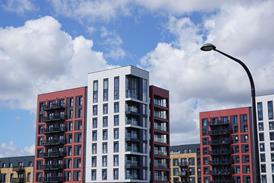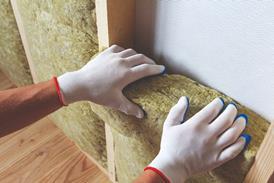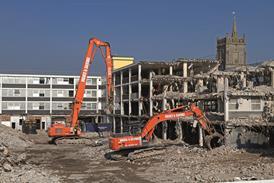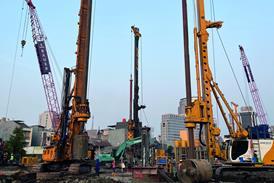To assist in providing documentation, the ECA and SELECT ITEC committee has formed a working group to provide model forms of certificates and test results schedules. The common completion/handover certificate together with the allied test result schedule will cover all the areas of work undertaken in the following industries:
The Working Group has produced the common completion and inspection certificate and the test result schedule allied to data and telecommunications, together with test and commissioning schedules for switchgear and controlgear panels.
Documentation for the other industries within the sector will be available soon.
The following is a guide to completing these documents.
Completion/handover certificate
Every certificate has a unique serial number which becomes the reference for the complete set of documents. This would be of benefit if a client was to make a claim under the ECA Warranty scheme, since such referenced documentation would show the project had been completed and give an indication as to what was the scope of the project.
The first section deals with the project details, the extent of the work and the type of installation.
The second section is the declaration of responsibility and needs to be completed by those responsible for the various aspects of the project.
The declaration allies itself to the standards matrix on the reverse of the certificate. The relevant standards listed should be retained if applicable, otherwise deleted as necessary. Any standard not listed should be inserted below the matrix under the heading "Other standards".
If the certificate is to be complemented with other relevant schedules or documents, these should be referenced at the bottom of the page on its reverse side.
Should the project involve works in a hazardous area, then details need to be given separately in the section underneath the standards declaration matrix.
Any departures from relevant standards and statutory requirements should be listed in the third section on the front of the certificate.
If more space is required to complete the certificate for any reason then an additional sheet may be used. However, ensure the sheet is attached securely to the certificate with the certificate serial number written on it.
Control panel supply and commissioning certificate
This is a schedule which should be used when supplying and/or installing any form of switchgear, controlgear or instrumentation panel. It can also be used when carrying out a periodic inspection of installed equipment.
Each schedule has a unique reference number which must be listed on the accompanying completion/handover certificate.
The first section asks for the number of schedules that are to be included and the accompanying completion certificate serial number. In the case of a periodic inspection, the words 'Periodic inspection report' should be written in place of the serial number. You are then asked to provide the associated project reference number.
The second section asks for a description of the panel. This means is it a control, instrumentation, or multimotor panel, for example, and what its level of complexity is.
Next you are asked to give references for any associated drawings and details of the panel construction. The form should reflect the panel type, ie Form 1, 2, 3, or 4. The IP rating is the level of ingress protection afforded by the panel, eg IP53. The dimensions and weight are asked for to ensure the physical aspects of the panel have been met. The finish is whether or not the panel is plated, painted, or non-applied finish. If painted or coated then the type of coating, its colour reference and thickness of application should be given.
The third section asks for the panel's electrical details. This should include the maximum fault withstand level and how it was determined, its voltage rating, frequency rating and maximum operational current rating. This is followed by a request for the maximum level of earth continuity across parts of the panel and the lowest level of insulation obtained upon testing of the panel before outgoing circuits are connected.
The fourth section contains a tick box section allied to the visual inspection of panel component integrity. The three options are: S – satisfactory; U – unsatisfactory; N/A – not applicable. For new equipment the result should be either satisfactory or not applicable. Unsatisfactory indicates an item of non-compliance which should be addressed.
On the reverse side is the commissioning inspection schedule. Details of the individual cubicles or sections within the panel are asked for. This begins with a request for identifying details of the cubicle or section, followed by a tick box section for the inspection before commissioning. This section is similar in approach to the previous section but requires a signature from the person carrying out the inspection and commissioning.
The next section confirms the settings of indicators and protective devices and records the outgoing circuit cable insulation values.
Finally a witnessed functional test is asked for with the appropriate signatories, together with the signature of the person who is responsible overall for the project on behalf of the supplying and/or installing company.
In addition a test instrument schedule should be provided and the reference number recorded on the schedule in the space provided.
Telecommunications and data networks schedule of test results
This schedule caters for telecommunications cabling whether it be telephony, local area network, wide area network, or integrated services data network. The front part of the schedule covers twisted pair cabling, while the reverse covers fibre optic cabling. Again the schedule should have a unique reference number and be allied to a completion/handover certificate.
As these installations are linked to individual standards, there is variance in what is compliant and what is not on any particular installation. It is therefore the standard specified by the client that dictates.
The first section asks for the documentation reference numbers and number of schedules in the document set, together with the project reference. The project reference may be a specific code number or an area located in named premises.
The next section covers the characteristics of the cable used and the test results obtained. These results are usually obtained using a test instrument such as a Pentascanner. If the instrument has a dedicated printout facility, then this may be used instead of the schedule. However, all the required reference and serial numbers should be marked on the printout and then attached to any other documentation in the set.
The heading of this section asks for the cable reference (cable identity number, as marked), the cable type (eg screened twisted pair – Cat 5), the binder group or bunch of cables where it is to be found (where cables have been bunched in groups), and the pair reference (number of pairs contained within the cable).
Next you are asked to provide the injection test results which assess the level of attenuation between the pairs, allied to the electrical length at the frequencies given. The expected value is the one contained in the relevant standard. The results will be based on the injected frequency values and the network dependent values. This will then provide the attenuation cable grading for the cable under test.
The results from the noise level test should be recorded next along with the network dependent dc resistance value. Again, these should be compared with the expected value contained in the relevant standard. Wire map values can be inserted for both far and near end scenarios.
This is then followed by the near end cross talk (NEXT) test results and identification of best pairs. The limit will be the one given in the formula contained in the specified standard. For this test the frequency should be stated and losses recorded for both active and passive hub conditions, as applicable. The cable grading can now be obtained, based upon NEXT criteria.
The third section asks for noise tests on networks utilising co-axial cable. This test is carried out without the use of an injector. The heading of this section only asks for the cable reference and cable type.
On the reverse side is the schedule for fibre-optic test results. The heading again asks for cable reference, cable type (eg plastic optical multimode fibre), and cable size (eg 62·5 micro mm). The columns then allow values for the core identity number, the cursor-to-cursor length, cursor-to-cursor dB loss, and the dB loss per km through propagation.
At the bottom of this side of the schedule is the section for signatures of the tester and witness, where a witness test is required.
The following certificates are now available from the ECA membership services administration in packs of 50:
Call the ECA membership services administration on 0171-313 4808.
Source
Electrical and Mechanical Contractor



















